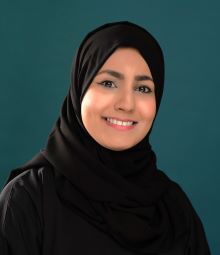Lama Al-Abdi

Developmental Genetics in Saudi Arabia and the Middle East: what has been accomplished and where are we headed
Utilizing the unique genetic makeup resulting from consanguineous unions in Saudi Arabia, we pioneered the use of autozygosity mapping combined with whole-exome sequencing to identify numerous novel disease-causing genes. This approach led to breakthroughs in understanding the genetic basis of rare Mendelian disorders, affecting all body systems. We were also able to make discoveries in the identification of Mendelian phenocopies of non-Mendelian diseases, such as SLE, obesity, and stroke. Autozygome-guided whole-exome sequencing analysis helped pave the way for the discovery of several novel genes and novel allelic disorders that turned out to be founders in our population. We are currently expanding our scope to include research into the identification of protective genetic variants that confer resistance to certain diseases. We are leveraging our discoveries in Mendelian diseases to study individuals who remain healthy despite high-risk genotypes. Our goal is to gain insights into natural disease resistance mechanisms, opening new avenues for therapeutic development. Furthermore, polygenic risk score studies are usually performed using populations that are over-represented in GWAS studies. Given the low representation of the Middle eastern population, we are working on refining our polygenic risk score calculations to be effective in predicting susceptibility to common diseases.